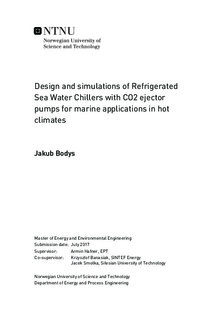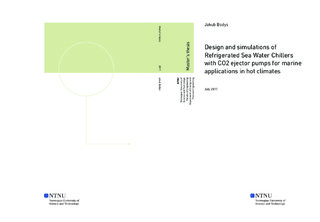| dc.description.abstract | According to provided literature review, many investigations concerned improvement possibilities of carbon-dioxide refrigeration units. Basis for further development of this technology are located in environmentally friendly working fluid, law regulations and large possibilities of further performance improvement of these systems. Several applications including large units operating for cooling and heating purposes of supermarkets and food industry, transport industry as well as whole district heating systems were successfully implemented to the market. Thermodynamic character of carbon-dioxide required many performance improvement based on various system configurations and control strategies, especially in hot climates as Mediterranean. However, mentioned applications are characterised by no limits of available space for system equipment. Whereas, these limitations is one of the major challenges in the case of marine industry and fishing vessels.
Matter of performance in higher temperatures of operation and limited space at fishing vessel was main challenges of the thesis. Meanwhile, conditions of higher ambient temperatures are related with higher power consumption for the same cooling capacity. Such a situation is mostly related with necessity of additional compressors unit. Proposal of system modification according to mentioned factors was stated as a main goal of the project. On the basis of measurement data delivered by Kuldeteknisk AS, mathematical model of baseline installation was developed. Several crucial factors as heat exchanger capacity, system power consumption and ejector operation had to be taken into consideration. Proposed alternative system layouts were analysed on the basis of roper sets of operating conditions characteristic for high ambient conditions.
Series of simulations for various climate zones were performed in order to evaluate systems performance. Having regard that an additional compressor increases the space requirement, analysis of modifications in the light of limited space and reduction of power demand were performed. Obtained results allowed for performance comparison of baseline installation working at Norwegian coast with modified systems in warm climates. Finally, up to 70\% of performance improvement was obtained in the case of most advanced installation working in warm east-Asian waters. Provided results showed that proper design of the system should ensure no necessity of an additional compressor in warmer climates with maintaining of the same cooling capacity. Hence, the described system could be implemented to the other markets bringing ecological and advanced solutions suitable for more demanding operation conditions. | |

